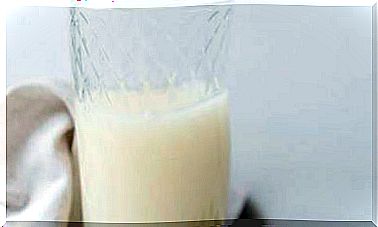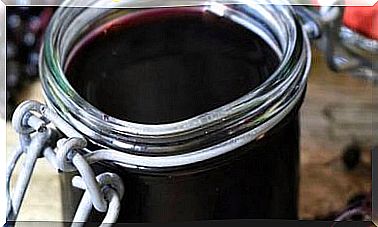Household Linen: The 4 Healthiest Natural Fabrics
The synthetic fabrics that we put at home affect our health, especially if they come into contact with the skin. Choose natural fabrics and if possible organic production.

For thousands of years, natural fibers have covered our bodies and our homes and it was not until just two centuries ago that synthetic fibers from petrochemicals and fast fashion have taken over the textile market.
Linen, organic cotton, wool or silk may seem like a minority today, but their environmental, skin and thermal health benefits continue to make them the fabrics of choice for a healthy home.
Natural fibers are a sustainable and healthy alternative to synthetic ones, especially if they are ecological, without toxic substances.
As we spend almost a third of our lives in bed sleeping, the choice of mattress and bedding should be a first-order decision and an investment in health. Experts say that, in a world as polluted and stressful as today, it is the area in which we most need to return to nature.
Natural fibers are a sustainable and healthy alternative to synthetic ones, especially if they are ecological, without toxic substances. Organic cotton or linen curtains, sheets and bedding, eco cotton towels, wool blankets and rugs, silk cushions or other vegetable fibers… There are many options to enjoy a comfortable and healthy environment at home.
Why choose natural fibers
Synthetic and modern fabrics (rayon, nylon, polyester, acrylic, polyamides, lycra, acetate, triacetate …) have been relegating the natural ones. Although they are lightweight, durable fibers that do not wrinkle, do not need ironing and are resistant to stains (and even moth-proofing), they have many drawbacks:
- They do not perspire well ; they are not fresh and contribute to unpleasant odors.
- They are poor conductors of electricity and generate electrostatic charges when rubbing or friction.
- They can be rough to the touch and some fabrics are highly flammable.
- They are not ecological at all. Environmentally speaking, its manufacture is polluting. And all those cheap consumer goods will end up in textile dumps, where they will take hundreds of years to disintegrate.
- They affect health. Polyester-based fabrics, which are presented under various names such as tergal, in addition to generating static electricity, can cause itching, redness, irritation of mucous membranes and respiratory problems in sensitive people. This is aggravated in people with allergies or multiple chemical sensitivities and who do not tolerate synthetics.
In contrast to these synthetic fibers, natural fibers stand out for providing well-being to the body. They are not only comfortable and soft to the touch; they are breathable due to their natural porosity. This helps regulate body moisture and absorb sweat, promoting comfort. They also regulate body temperature, keeping the body warmer in cold weather. In addition, if they have not received toxic treatment during cultivation and processing, they stand out for their hypoallergenic properties and are not irritating to the skin.
Although the best known are flax, cotton, wool and silk, there are many other natural fibers: hemp, ramie (Asian plant fiber similar to flax), bamboo, corn, cellulose fibers (such as lyocel or tencel) , kapopk (vegetable fiber from a South American tree) or coconut shell fiber, which makes it possible to make a strong, rustic and exotic fabric at the same time.
Beyond passing fads, natural fabrics have coexisted with us since the beginning of time and their advantages are timeless. Let’s look at the four most common.
1. Linen, the most ecological
With a lot of history. It is the oldest plant-based fiber. It has dressed both wise men and pharaohs as well as the lower classes and until just 200 years ago almost all the villages in Europe were self-sufficient in linen. It was popular clothing. Linen are also the canvases and oils of the paintings of the great geniuses of painting. Its benefits are multiple:
- Excellent for sleeping. Linen absorbs moisture very well and regulates body temperature (in winter it keeps you warm and in summer cool), which offers the body a more restful sleep.
- Very resistant. It is also very durable (more than cotton) and resistant to the passage of time.
- Biodegradable. It is a 100% natural fabric, biodegradable, recyclable and one of the most ecological and sustainable in its cultivation, collection and manufacture. It is a native plant, it does not deplete the earth’s resources, it does not generate parasites and it does not attract pests. Nor does it need fertilizers, pesticides or pesticides for its development. And it consumes less water than cotton.
How to care for linen
So that your linen fabrics pass from generation to generation in your family:
- When purchasing a new 100% linen product, separate it from other garments in the first few washes, and also separate light and dark
- Linen can be washed by hand, but gently: without aggressive detergents or bleaches and without twisting, so that it does not warp. Don’t squeeze it too much to drain it.
- Let the linen dry on a clothesline without direct sunlight to keep it firm and not lose color. If it is white linen, the air helps preserve the color.
- Quality linens do not need an iron because they have a very aesthetic natural wrinkle. It is best to hang the garment very well so that it dries with hardly any wrinkles.
- It can be ironed with the linen function and something damp.
2. Organic cotton
The organic cotton is respectful of nature and is an ideal choice for many reasons:
- It is especially suitable for garments that come into contact with the skin, because it breathes and provides softness and comfort.
- It is resistant, easy to dye, does not cause allergies and resists the action of the moth better than wool.
- Respectful cultivation. Its cultivation is carried out in a harmonious and natural way, rotating them to avoid soil imbalance.
- No GMOs or chemical fertilizers are used.
3. Sustainable wool
Wool is a natural fiber with an enormous ability to absorb moisture, it offers excellent insulation from both heat and cold. In addition, it does not allow bacteria to proliferate and therefore does not usually give off strong odors.
- Disadvantages. Among its drawbacks, that it can fray and that it can shrink. In addition, being of animal origin it is not an option for many vegans, although there are wool brands that are committed to ethical shearing, respectful of the environment and animals.
- No toxic. If the wool comes from sheep with organic pastures and all its cleaning is done without additives, bleaches or solvents, the result is a long-lasting, biodegradable, highly resistant and hypoallergenic fabric .
4. Naturally ecological silk
Another fiber of animal origin: it is produced by the silkworm. It is the most expensive, but also the least treated, since its molecular structure does not allow almost any chemical treatment or allows impregnations.
It also has a great ability to absorb moisture, does not adhere to the skin or tear, nor is it usually attacked by moths, it is very insulating, neutralizes body odor and never causes skin allergies.
- Disadvantages. As a negative point, in addition to the price, it is sensitive to sweat and must be washed often.









